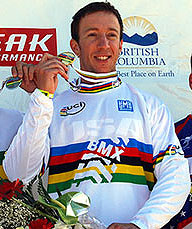Get ready for a detail post! So my fork has been increasingly acting like a pogo stick as of late. I did a little research for it and learned that changing of the seals and oil can not only improve performance, it will prolong the life of your fork! First, I ordered a seal kit for my fork, the painfully long-named 'Fox F29 FIT RLC'. In order to get at the guts of the fork, I first had to take off a top cap:
Right side top cap
The problem I had with the top cap was that it has a very low profile wrench flats, and a large socket has a lip on the bottom:
Cutaway of socket
Grinders are FUN
With this set up, the tool matched up well and the top caps came off easily.
Matching up well!
Removing the top cap
Ready for the next step!
I'm going to spare you the next few steps, but rest assured that it involved pulling all the parts out of the forks, cleaning them up, and then putting it back together. I replaced the seals, which keep the oil on the right side of the fork. Finally, I filled the fork with all new oil.
Half way through deconstruction
Once everything was apart, it wasn't too much work to clean and re-lube everything. The seal kit only consisted of two seals and two foam washers, and Fox's web site had great step by step instructions on how to tackle it all. Threw everything back together, and after a couple rides, I really noticed the difference!

































